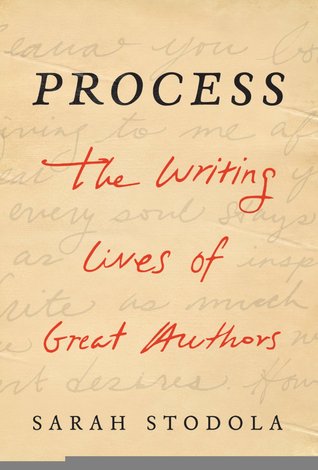More on this book
Community
Kindle Notes & Highlights
Read between
December 4 - December 17, 2018
learn something, and then you can write about it as well as if not better than the stuff you know from personal experience.
That first energy generally comes sometime between 9:30 and 10:30 in the morning—an early riser he is not.318 Rushdie then writes for four hours or so, during which he might write two to four pages319—
discipline of writing first thing in the morning—“not pacing around waiting for the muse to descend”—and the discipline of using words sparingly, of not overwriting.326
For Rushdie, a key part of that exploratory process involves finding the right title for the work. “When you know the name, you know what the book is about,” he says.364
her. She begins by rewriting her own work from previous days, capturing the rhythm of her own prose and eventually breaking new ground, progressing further into the book.
he met the charismatic but troubled Neal Cassady in 1946, and everything changed for Kerouac again. On the Road opens with that meeting, and there’s an easy argument to be made for it being the definitive event of Kerouac’s life as a writer.
bed. It was the Benzedrine that kept Kerouac going for three nonstop weeks when he wrote On the Road on the single scroll of paper in April 1951, although years later he claimed to have written it fueled by coffee alone.
it. Drugs, for Kerouac, were a means for tweaking one’s perceptions, a key element in his creative philosophy.
Every day, he took notes, kept his journal, wrote letters. But the time reserved for novel writing came in sporadic bursts, during which he would take Benzedrine and then write night and day until the work was finished, often at his mother’s kitchen table.
For Hemingway, danger, adventure, and novel writing went hand in hand. He invented the writer as hero, and in doing so reinvented what it meant to have a literary life in America. Getting out in the world, running up to death and then teasing it—in Hemingway’s conception, this was the life of the writer.
The subject that most fascinated Ernest Hemingway as a writer revealed itself to be Ernest Hemingway, and his fiction started off and remained intensely autobiographical. In early short stories, he invented the character of Nick Adams as a stand-in for himself. Nick Adams provided Hemingway with a sort of buffer, shielding him from having to acknowledge self-criticism and also allowing him to create a perhaps more pleasing version of himself: Adams is more optimistic and less flawed than his creator.
“If a writer stops observing he is finished. But he does not have to observe consciously nor think how it will be useful. Perhaps that would be true at the beginning. But later everything he sees goes into the great reserve of things he knows or has seen.”465
Wherever he was, Hemingway started by rewriting the previous days’ work, then moving forward, always going until around noon, at which time he was done entirely, both mentally and physically.
“For Joyce, Dublin was always the Dublin of 1904. The clock stopped. That meant he had stable material with which to work as an artist.”
Joyce also demanded that the facts upon which his stories were propped be unerringly accurate.
The things that Díaz’s characters aren’t willing to say, it turns out, say a striking amount about them.536 The silences, or what isn’t said, are a crucial element in Díaz’s work.
Fitzgerald’s lifelong approach to writing short stories for the money rather than the art of them.
The Great Gatsby was the first novel in which Fitzgerald achieved what he’d been working toward: transmuted autobiography, meaning he was able to suffuse characters that were not him with his own emotions.


